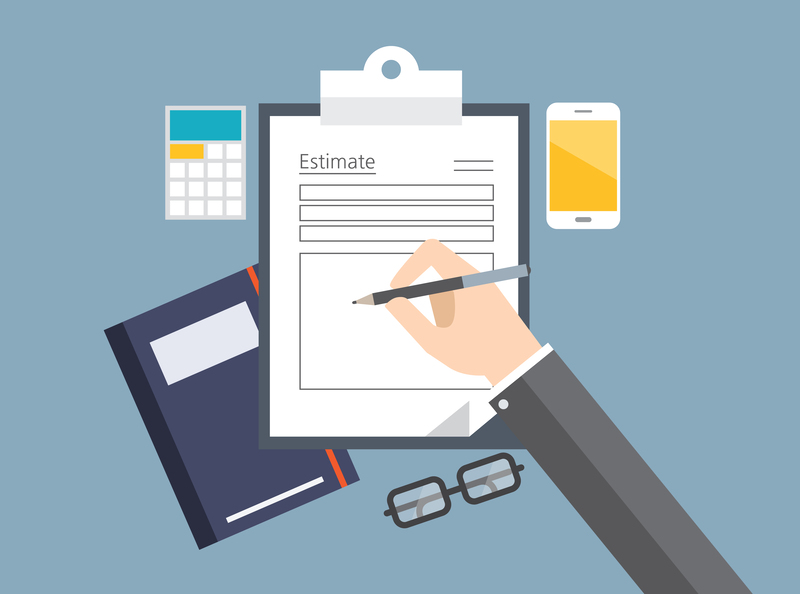DIY vs. Professional Piano Moving: Why Experts Win
Posted on 27/05/2025
DIY vs. Professional Piano Moving: Why Experts Win
When it comes time to move a piano, whether it's a cherished upright, an elegant baby grand, or a full-sized concert grand, a critical decision must be made: Should you attempt a DIY piano move or enlist professional movers? While saving money is a tempting lure, the complexities involved in relocating such a heavy and delicate instrument demand serious consideration. This comprehensive guide will explore the pros and cons of DIY versus professional piano moving, and will explain why professional piano movers almost always come out on top.

Understanding the Challenge: The Risks of Piano Moving
Pianos are not your average pieces of furniture. A standard upright piano can weigh anywhere from 300 to 900 pounds, while a grand piano may tip the scales at over 1,000 pounds. Beyond the sheer weight, their interiors contain thousands of moving parts that are extremely sensitive to shock, vibrations, and humidity. The casework is often made from high-value woods, vulnerable to scratches and dents. Even a seemingly simple move across a room--or up or down one flight of stairs--presents dangers.
- Weight Distribution: Pianos have uneven weight distribution, making them awkward and prone to tipping.
- Fragility: The legs and pedals are delicate, and the internal action is easily damaged by sudden jolts.
- Size and Shape: Large pianos may not fit through standard doorways or around tight corners.
- Value: Most pianos represent not just monetary value but family heritage or sentimental worth.
When comparing DIY piano moving vs professional piano movers, these challenges make it clear: moving a piano is never a trivial task.
DIY Piano Moving: The Risks and Realities
What is Involved in DIY Piano Moving?
People often envision DIY piano moving as simply wrapping the instrument in blankets, gathering a few strong friends, and renting a truck. In practice, it requires detailed planning, specialized equipment, and a sound understanding of both piano anatomy and proper moving technique.
- Planning the Route: Doorway measurements, stair angles, and elevator access must be considered first.
- Securing Equipment: Essential items include piano dollies, heavy-duty straps, padding, planks for leveling stairs, and sometimes even a winch or crane.
- Manpower: At least four able-bodied adults are often needed, with coordination and strength being equally important.
- Physical Risk: Back injuries, crushed fingers, and sprained muscles are common outcomes for the unprepared.
- Instrument Risk: Improper handling can lead to dropped pianos, broken legs or strings, and even destroyed frames.
Common DIY Piano Moving Mistakes
- Underestimating the Weight: Misjudging the bulk and awkwardness can lead to loss of control.
- Poor Protection: Insufficient padding leads to dings, scratches, and damaged finishes.
- Ignoring the Internal Mechanics: A sudden jolt may throw the piano out of tune, or worse, damage the action or soundboard.
- Lack of Proper Equipment: Using towels instead of moving blankets or cheap straps worsens the risk of accidents.
Advantages of Professional Piano Movers
Expertise and Experience
Professional piano movers are trained specifically to handle heavy and fragile musical instruments. Their *years of experience* allow them to anticipate challenges that the average person might overlook. The difference in expertise can mean:
- Familiarity with Various Pianos: Whether it's an upright, spinet, baby grand, or concert grand, professionals know the specific anatomy and vulnerabilities of each model.
- Proven Techniques: From disassembling legs and pedals to reassembling and tuning at the new location, professional movers follow proven protocols to ensure the safety of your instrument.
- Efficient Navigation: Experts can move pianos through narrow halls, staircases, and doorways without causing damage to your home or your piano.
Specialized Equipment
One of the biggest advantages of hiring professional piano movers is access to *specialized moving gear* designed for safe and efficient relocation:
- Piano Skids & Dollies: These devices are engineered to support the piano's weight while allowing for smooth transport.
- Custom Padding: Heavy quilted blankets and foam padding protect the finish and internal components.
- Stair Climbing Tools: Motorized dollies help navigate steep staircases without putting people or property at risk.
- Safe Transport Vehicles: Professional vehicles include air-ride suspension, climate control, and lift gates for damage-free delivery.
Comprehensive Insurance Coverage
When you do it yourself, any accident is your financial burden. Most professional piano movers offer insurance packages that will compensate you in the rare event of damage during transit.
- Peace of Mind: Your investment is protected, and your stress levels are lower.
- Accountability: Professionals are accountable for the condition of your piano, both at pickup and at delivery.
Comparing Costs: DIY vs. Professional Piano Movers
DIY Piano Moving: Hidden Costs
The initial motivation for DIY is often to save money. However, *hidden costs* can quickly add up:
- Equipment Rental: Skids, dollies, padding, and straps all cost money to rent or purchase.
- Truck Rental: You'll need a vehicle with a ramp or lift gate--most cargo vans won't do.
- Labor: Willing friends may suffice, but if you need to hire help, the costs increase dramatically.
- Potential Damage: Any accidental drops or scrapes can result in expensive repairs or complete loss.
- Medical Bills: Injuries sustained during the process can be costly.
When all factors are included, the "cheaper" route can quickly approach or even exceed the cost of hiring professionals.
Cost Benefits of Professional Piano Movers
- Flat Fee Upfront: Professional movers typically offer a transparent, flat-rate quote that includes labor, equipment, transport, insurance, and setup.
- Reduced Damage Risk: With experienced handling, the chance of needing costly repairs is minimized.
- Time Savings: With a streamlined process, the entire move takes a fraction of the time it would take a DIY crew.
Overall, when considering piano moving costs, the savings of DIY are often minimal--and the risks far outweigh the benefits.
Professional Piano Moving: A Step-by-Step Process
To better illustrate why professional piano movers win, let's break down the standard steps they take during a move:
- Pre-Move Assessment: Movers inspect the piano and the environment, identifying hazards, measuring doorways and stairwells, and planning a detailed route.
- Preparation: The piano is secured using custom padding and moving blankets, and leg/pedal assemblies are removed if necessary.
- Loading: Using specialized dollies or cranes, movers load the piano into a climate-controlled truck, ensuring it is carefully secured for the journey.
- Transport: The piano is transported in vehicles with air-ride suspension to minimize vibrations and shocks.
- Delivery and Setup: On arrival, the team reassembles, places, and--if requested--tunes the piano in its new location.
When Is DIY Piano Moving Acceptable?
With so many risks, there are a few scenarios where a do-it-yourself piano move makes sense:
- Short Distances: Relocating an inexpensive keyboard or small spinet across the same room or building.
- No Stairs or Obstacles: Moving across a single, level floor with wide clearances.
- Proper Manpower and Equipment: You have access to a strong, experienced team and high-quality moving tools.
- Informed Risk: The piano is of low monetary and sentimental value, and you're willing to accept potential loss or damage.
In almost every other case--especially for valuable, antique, or grand pianos--hiring professional piano movers is the wisest choice.
What to Look For in Professional Piano Movers
If you've decided to hire the pros, here are some tips for choosing the right piano moving service:
- Specialization: Ensure they specialize in piano moving; general movers may lack necessary skills.
- Licensing and Insurance: Ask for proof of insurance and proper business licensing.
- Reputation: Check online reviews, ask for referrals, and verify experience with your type of piano.
- Clear Quotes: Seek transparent pricing with all fees included; beware of hidden costs.
- Communication: Good movers will answer questions patiently and offer advice on preparation and post-move care.
DIY vs. Professional Piano Moving: Conclusion
There's no denying that a DIY piano move is a bold undertaking that may appeal to those with physical strength, moving expertise, and a willingness to risk their instrument. However, the potential costs--both financial and emotional--can be enormous. In contrast, professional piano movers offer the assurance of safety, expertise, proper equipment, and insurance, all of which virtually eliminate the risks associated with moving such a precious instrument.
Key Takeaways: Why Hire Professional Piano Movers?
- Expertise: Movers have the necessary training and experience for every kind of piano relocation.
- Safety: Protect your piano, property, and personal well-being from damage or injury.
- Insurance: Your instrument is covered against unforeseen accidents.
- Efficiency: Save time--and your back--by letting the pros handle every detail.
The verdict on DIY vs. professional piano moving is clear: When your piano's safety and your peace of mind are on the line, trust the move to the experts. You'll protect your investment and ensure that your treasured instrument arrives in pristine condition, ready to bring music to your life for years to come.

Frequently Asked Questions About Piano Moving
Is it ever safe to move a piano yourself?
Moving a small, lightweight keyboard or spinet on a flat, obstacle-free surface might be manageable, but even then, care must be taken. For larger pianos, stairs, or long distances, professional movers are strongly recommended.
How much does it cost to hire professional piano movers?
Costs vary based on the piano's size, type, distance moved, and difficulty (e.g., stairs or tight spaces), but expect professional piano moving services to start at $150-$500 for short local moves and go up for complex jobs.
Will professional movers keep my piano in tune?
Even with the utmost care, any move can affect piano tuning. Many professional movers work with piano technicians or offer tuning services after relocation for the best sound quality.
Are there risks in moving a piano even for professionals?
While professionals mitigate nearly all risks with training and equipment, there is always some risk of accident or unforeseen circumstance. However, reputable movers provide insurance to cover such possibilities.
For further information on professional piano moving, piano relocation, and piano transportation, consult trusted local movers or your instrument manufacturer for recommendations specific to your situation.
Final Thoughts: Leave Your Piano Move to the Experts
Your piano is more than just a heavy piece of furniture; it's a valuable musical investment and often, a cherished family heirloom. The challenges of moving a piano go far beyond brute strength. When weighing DIY vs. professional piano moving, remember that expert movers bring not only muscle but also technique, equipment, and knowledge to ensure your instrument's safety.
In the contest between do-it-yourself and expert movers, the professionals always win.



